Are Pilots Deserting Washington’s Remote-Control War?
The U.S. drone war across much of the Greater Middle East and parts of Africa is in a kind of crisis: drone pilots are quitting in record numbers.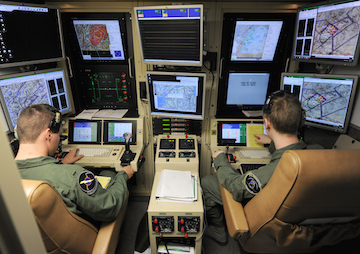
By Pratap Chatterjee, TomDispatch
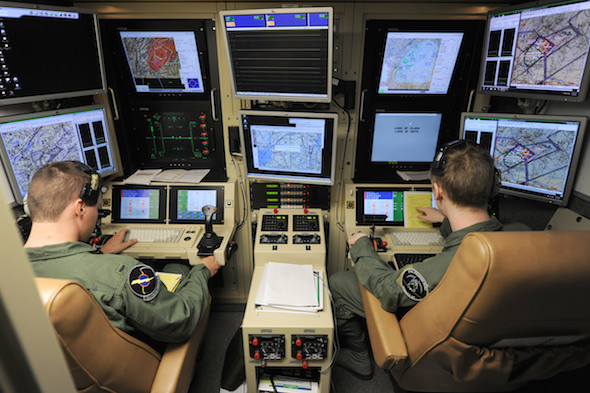
A student pilot and a sensor operator man the controls of an MQ-9 Reaper in a ground-based cockpit during a training mission at Hancock Field Air National Guard Base, Syracuse, N.Y., in 2012. (AP / Defense Department)
This piece first appeared at TomDispatch. Read Tom Engelhardt’s introduction here.
The U.S. drone war across much of the Greater Middle East and parts of Africa is in crisis and not because civilians are dying or the target list for that war or the right to wage it just about anywhere on the planet are in question in Washington. Something far more basic is at stake: drone pilots are quitting in record numbers.
There are roughly 1,000 such drone pilots, known in the trade as “18Xs,” working for the U.S. Air Force today. Another 180 pilots graduate annually from a training program that takes about a year to complete at Holloman and Randolph Air Force bases in, respectively, New Mexico and Texas. As it happens, in those same 12 months, about 240 trained pilots quit and the Air Force is at a loss to explain the phenomenon. (The better-known U.S. Central Intelligence Agency drone assassination program is also flown by Air Force pilots loaned out for the covert missions.)
On January 4, 2015, the Daily Beast revealed an undated internal memo to Air Force Chief of Staff General Mark Welsh from General Herbert “Hawk” Carlisle stating that pilot “outflow increases will damage the readiness and combat capability of the MQ-1/9 [Predator and Reaper] enterprise for years to come” and added that he was “extremely concerned.” Eleven days later, the issue got top billing at a special high-level briefing on the state of the Air Force. Secretary of the Air Force Deborah Lee James joined Welsh to address the matter. “This is a force that is under significant stress — significant stress from what is an unrelenting pace of operations,” she told the media.
In theory, drone pilots have a cushy life. Unlike soldiers on duty in “war zones,” they can continue to live with their families here in the United States. No muddy foxholes or sandstorm-swept desert barracks under threat of enemy attack for them. Instead, these new techno-warriors commute to work like any office employees and sit in front of computer screens wielding joysticks, playing what most people would consider a glorified video game.
They typically “fly” missions over Afghanistan and Iraq where they are tasked with collecting photos and video feeds, as well as watching over U.S. soldiers on the ground. A select few are deputized to fly CIA assassination missions over Pakistan, Somalia, or Yemen where they are ordered to kill “high value targets” from the sky. In recent months, some of these pilots have also taken part in the new war in the Syrian and Iraqi borderlands, conducting deadly strikes on militants of ISIL.
Each of these combat air patrols involves three to four drones, usually Hellfire-missile-armed Predators and Reapers built by southern California’s General Atomics, and each takes as many as 180 staff members to fly them. In addition to pilots, there are camera operators, intelligence and communications experts, and maintenance workers. (The newer Global Hawk surveillance patrols need as many as 400 support staff.)
The Air Force is currently under orders to staff 65 of these regular “combat air patrols” around the clock as well as to support a Global Response Force on call for emergency military and humanitarian missions. For all of this, there should ideally be 1,700 trained pilots. Instead, facing an accelerating dropout rate that recently drove this figure below 1,000, the Air Force has had to press regular cargo and jet pilots as well as reservists into becoming instant drone pilots in order to keep up with the Pentagon’s enormous appetite for real-time video feeds from around the world.
The Air Force explains the departure of these drone pilots in the simplest of terms. They are leaving because they are overworked. The pilots themselves say that it’s humiliating to be scorned by their Air Force colleagues as second-class citizens. Some have also come forward to claim that the horrors of war, seen up close on video screens, day in, day out, are inducing an unprecedented, long-distance version of post-traumatic stress syndrome (PTSD).
But is it possible that a brand-new form of war — by remote control — is also spawning a brand-new, as yet unlabeled, form of psychological strain? Some have called drone war a “coward’s war” (an opinion that, according to reports from among the drone-traumatized in places like Yemen and Pakistan, is seconded by its victims). Could it be that the feeling is even shared by drone pilots themselves, that a sense of dishonor in fighting from behind a screen thousands of miles from harm’s way is having an unexpected impact of a kind psychologists have never before witnessed?
Killing Up Close and Personal From Afar
There can be no question that drone pilots resent the way other Air Force pilots see them as second-class citizens. “It’s tough working night shifts watching your buddies do great things in the field while you’re turning circles in the sky,” a drone instructor named Ryan told Mother Jones magazine. His colleagues, he says, call themselves the “lost generation.”
“Everyone else thinks that the whole program or the people behind it are a joke, that we are video-game warriors, that we’re Nintendo warriors,” Brandon Bryant, a former drone camera operator who worked at Nellis Air Force Base, told Democracy Now.
Certainly, there is nothing second-class about the work tempo of drone life. Pilots log 900-1,800 hours a year compared to a maximum of 300 hours annually for regular Air Force pilots. And the pace is unrelenting. “A typical person doing this mission over the last seven or eight years has worked either six or seven days a week, twelve hours a day,” General Welsh told NPR recently. “And that one- or two-day break at the end of it is really not enough time to take care of that family and the rest of your life.”
The U.S. drone war across much of the Greater Middle East and parts of Africa is in crisis and not because civilians are dying or the target list for that war or the right to wage it just about anywhere on the planet are in question in Washington. Something far more basic is at stake: drone pilots are quitting in record numbers.
There are roughly 1,000 such drone pilots, known in the trade as “18Xs,” working for the U.S. Air Force today. Another 180 pilots graduate annually from a training program that takes about a year to complete at Holloman and Randolph Air Force bases in, respectively, New Mexico and Texas. As it happens, in those same 12 months, about 240 trained pilots quit and the Air Force is at a loss to explain the phenomenon. (The better-known U.S. Central Intelligence Agency drone assassination program is also flown by Air Force pilots loaned out for the covert missions.)
On January 4, 2015, the Daily Beast revealed an undated internal memo to Air Force Chief of Staff General Mark Welsh from General Herbert “Hawk” Carlisle stating that pilot “outflow increases will damage the readiness and combat capability of the MQ-1/9 [Predator and Reaper] enterprise for years to come” and added that he was “extremely concerned.” Eleven days later, the issue got top billing at a special high-level briefing on the state of the Air Force. Secretary of the Air Force Deborah Lee James joined Welsh to address the matter. “This is a force that is under significant stress — significant stress from what is an unrelenting pace of operations,” she told the media.
In theory, drone pilots have a cushy life. Unlike soldiers on duty in “war zones,” they can continue to live with their families here in the United States. No muddy foxholes or sandstorm-swept desert barracks under threat of enemy attack for them. Instead, these new techno-warriors commute to work like any office employees and sit in front of computer screens wielding joysticks, playing what most people would consider a glorified video game.
They typically “fly” missions over Afghanistan and Iraq where they are tasked with collecting photos and video feeds, as well as watching over U.S. soldiers on the ground. A select few are deputized to fly CIA assassination missions over Pakistan, Somalia, or Yemen where they are ordered to kill “high value targets” from the sky. In recent months, some of these pilots have also taken part in the new war in the Syrian and Iraqi borderlands, conducting deadly strikes on militants of ISIL.
Each of these combat air patrols involves three to four drones, usually Hellfire-missile-armed Predators and Reapers built by southern California’s General Atomics, and each takes as many as 180 staff members to fly them. In addition to pilots, there are camera operators, intelligence and communications experts, and maintenance workers. (The newer Global Hawk surveillance patrols need as many as 400 support staff.)
The Air Force is currently under orders to staff 65 of these regular “combat air patrols” around the clock as well as to support a Global Response Force on call for emergency military and humanitarian missions. For all of this, there should ideally be 1,700 trained pilots. Instead, facing an accelerating dropout rate that recently drove this figure below 1,000, the Air Force has had to press regular cargo and jet pilots as well as reservists into becoming instant drone pilots in order to keep up with the Pentagon’s enormous appetite for real-time video feeds from around the world.
The Air Force explains the departure of these drone pilots in the simplest of terms. They are leaving because they are overworked. The pilots themselves say that it’s humiliating to be scorned by their Air Force colleagues as second-class citizens. Some have also come forward to claim that the horrors of war, seen up close on video screens, day in, day out, are inducing an unprecedented, long-distance version of post-traumatic stress syndrome (PTSD).
But is it possible that a brand-new form of war — by remote control — is also spawning a brand-new, as yet unlabeled, form of psychological strain? Some have called drone war a “coward’s war” (an opinion that, according to reports from among the drone-traumatized in places like Yemen and Pakistan, is seconded by its victims). Could it be that the feeling is even shared by drone pilots themselves, that a sense of dishonor in fighting from behind a screen thousands of miles from harm’s way is having an unexpected impact of a kind psychologists have never before witnessed?
Killing Up Close and Personal From Afar
There can be no question that drone pilots resent the way other Air Force pilots see them as second-class citizens. “It’s tough working night shifts watching your buddies do great things in the field while you’re turning circles in the sky,” a drone instructor named Ryan told Mother Jones magazine. His colleagues, he says, call themselves the “lost generation.”
“Everyone else thinks that the whole program or the people behind it are a joke, that we are video-game warriors, that we’re Nintendo warriors,” Brandon Bryant, a former drone camera operator who worked at Nellis Air Force Base, told Democracy Now.
Certainly, there is nothing second-class about the work tempo of drone life. Pilots log 900-1,800 hours a year compared to a maximum of 300 hours annually for regular Air Force pilots. And the pace is unrelenting. “A typical person doing this mission over the last seven or eight years has worked either six or seven days a week, twelve hours a day,” General Welsh told NPR recently. “And that one- or two-day break at the end of it is really not enough time to take care of that family and the rest of your life.”
Controller: “Bullshit! Where? I don’t think they have kids out this hour. I know they’re shady, but come on!”
Camera operator “A sweet [expletive]! Geez! Lead vehicle on the run and bring the helos in!”
Moments later, Kiowa helicopter pilots descended and fired Hellfire missiles at the vehicle.
Controller: “Take a look at this one. It was hit pretty good. It’s a little toasty! That truck is so dead!”
Within 20 minutes, after the survivors of the attack had surrendered, the transcript recorded the sinking feelings of the drone pilots as they spotted women and children in the convoy and could not find any visual evidence of weapons.
A subsequent on-the-ground investigation established that not one of the people killed was anything other than an ordinary villager. “Technology can occasionally give you a false sense of security that you can see everything, that you can hear everything, that you know everything,” Air Force Major General James Poss, who oversaw an investigation into the incident, later told the Los Angeles Times.
Of course, Obama administration officials claim that such incidents are rare. In June 2011, when CIA Director John Brennan was still the White House counterterrorism adviser, he addressed the issue of civilian deaths in drone strikes and made this bold claim: “Nearly for the past year, there hasn’t been a single collateral death, because of the exceptional proficiency, precision of the capabilities that we’ve been able to develop.”
His claim and similar official ones like it are, politely put, hyperbolic. “You Never Die Twice,” a new report by Jennifer Gibson of Reprieve, a British-based human rights organization, settles the question quickly by showing that some men on the White House “kill list” of terror suspects to be taken out have “’died’ as many as seven times.”
Gibson adds, “We found 41 names of men who seemed to have achieved the impossible. This raises a stark question. With each failed attempt to assassinate a man on the kill list, who filled the body bag in his place?” In fact, Reprieve discovered that, in going after those 41 “targets” numerous times, an estimated 1,147 people were killed in Pakistan by drones. Typical was the present leader of al-Qaeda, Ayman al-Zawahiri. In two strikes against “him” over the years, according to Reprieve, 76 children and 29 adults have died, but not al-Zawahiri.
Deserting the Cubicle
Back in the United States, a combination of lower-class status in the military, overwork, and psychological trauma appears to be taking its mental toll on drone pilots. During the Vietnam War, soldiers would desert, flee to Canada, or even “frag” — kill — their officers. But what do you do when you’ve had it with your war, but your battle station is a cubicle in Nevada and your weapon is a keyboard?
Is it possible that, like their victims in Pakistan and Yemen who say that they are going mad from the constant buzz of drones overhead and the fear of sudden death without warning, drone pilots, too, are fleeing into the night as soon as they can? Since the Civil War in the U.S., war of every modern sort has produced mental disturbances that have been given a variety of labels, including what we today call PTSD. In a way, it would be surprising if a completely new form of warfare didn’t produce a new form of disturbance.
We don’t yet know just what this might turn out to be, but it bodes ill for the form of battle that the White House and Washington are most proud of — the well-advertised, sleek, new, robotic, no-casualty, precision conflict that now dominates the war on terror. Indeed if the pilots themselves are dropping out of desktop killing, can this new way of war survive?
Pratap Chatterjee is executive director of CorpWatch. He is the author of Halliburton’s Army: How A Well-Connected Texas Oil Company Revolutionized the Way America Makes War and Iraq, Inc. His next book, Verax, a graphic novel about whistleblowers and mass surveillance co-authored by Khalil Bendib, will be published by Metropolitan Books in 2016.
Copyright 2015 Pratap Chatterjee
Your support matters…Independent journalism is under threat and overshadowed by heavily funded mainstream media.
You can help level the playing field. Become a member.
Your tax-deductible contribution keeps us digging beneath the headlines to give you thought-provoking, investigative reporting and analysis that unearths what's really happening- without compromise.
Give today to support our courageous, independent journalists.

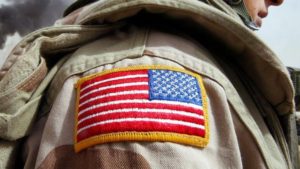

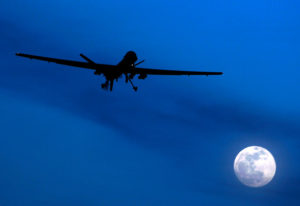
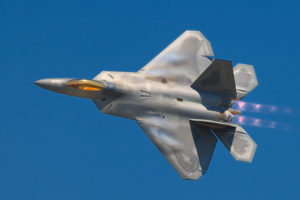
You need to be a supporter to comment.
There are currently no responses to this article.
Be the first to respond.